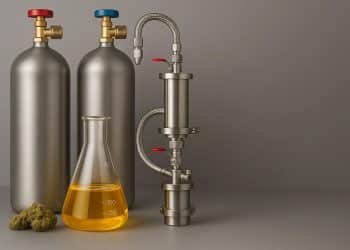In the ever-evolving 21st century, botanical extraction processes have matured to the point where botanical and plant matter can be easily extracted in many different ways for a number of different end-products in a rather quick period of time. Just browse the many articles in this blog alone to get an idea of the advancements and technologies that currently constitute the industry as a whole. It’s exciting to see the evolution of the processes and how far they’ve advanced from the days of techniques such as enfleurage that is an age-old means of plant oil extraction.
Arcaic extraction
Used as a means by ancient Egyptians to obtain fragrances from flower petals, enfleurage (a name later derived by the French, meaning “to saturate with the perfume from flowers”) is a more-delicate method of extracting the essences of certain flowers so as to not destroy their biomass during the process. Flowers such as rose, jasmine, violet, and daffodils among others contain so many desirable natural scents, but are just too fragile and full of thermolabile products to be heated. That’s where enfleurage and its room temperature application of animal fat as a solvent comes into play.
The fat being used as solvent is placed upon two frames formed by a glass plate within a wooden frame. Fresh, hand-procured flowers are then placed upon the fat and sandwiched together by the two plate frames on each side. After a few days, the pressed flowers are removed and then replaced by fresh ones. To make matters even more drawn-out, this process is usually repeated anywhere from two to three dozen times until the fat is completely concentrated.
Once this aromatic fat has reached a desirable level of flower oils, it’s then scraped off the frames for further use as pomade-like solid or more typically has an alcohol-based solvent applied to it after a filtration process to leave a refined and perfumed oil.
Casualty of scientific progress
Perfumed oils were very in vogue among high society in France during the 18th century. Enfleurage techniques were still utilized by many to keep up with the demand at that time. Ultimately the enfleurage technique was essentially abandoned due to the time-consuming nature of the process, as well as the massive amount of flower biomass needed to concentrate each and every time. Modern processes such as supercritical CO2 extraction are now able to perform the task of delicate flower extraction in a fraction of the time and with a much more viable and productive yield.
Image: https://www.pexels.com/it-it/foto/fiori-petali-flora-crescita-5649254/












